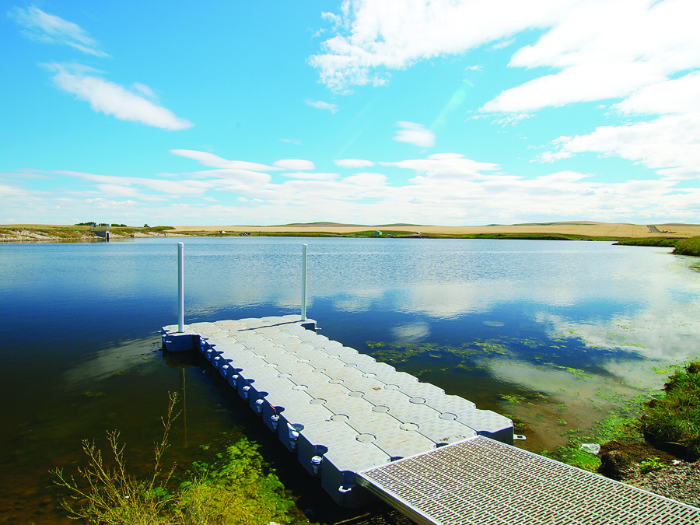
Severn Dam Lake, normally a picturesque prairie lake, has a Health Advisory in effect. Alberta Health Services has identified blue-green algae, also known as cyanobacteria, in the lake. Though naturally occurring, blue-green algae can cause irritation, nausea, diarrhea, vomiting, stomach cramps,liver damage, severe illness, or even death.

Alberta Health Services (AHS) has issued a Health Advisory for Severn Dam Lake, located between the villages of Rosebud and Standard.
Recently, AHS identified a high concentration of blue-green algae, otherwise known as cyanobacteria, in the lake.
As of this time AHS cannot say when the lake will be clear again.
“There are very different types of algae, so we can’t say for certain how long that condition will persist in a lake. Once we notice a bloom, we leave an advisory on the lake for the rest of the year,” said Dr. Ifeoma Achebe, a medical officer with AHS Central Zone. “Sometimes it takes weeks to clear and other times months.”
Residents living close to the lake and visitors are being cautioned to avoid swimming in or drinking from the lake and to keep children, pets, and livestock away from the water. Residents are advised to avoid any contact with algal blooms that have washed up on the shoreline.
Blue-green algae can produce a potent toxin with can present a health risk to humans and animals.
“The toxin can be harmful to health. When they come into contact with the skin, they can cause rashes, irritation, redness in the eye, and allergic reactions,” said Dr. Achebe. “When it’s ingested it can cause nausea, vomiting, diarrhea, stomach cramps, fever, headache, muscle pain, and prolonged exposure can cause liver damage or death. It’s harmful to animals that drink from it, too.”
Boiling the water does not remove or destroy the toxins produced by blue-green algae.
Blue-green algae is occurs naturally in lakes and ponds. Algae blooms appear as a bluish-green scum, the consistency of pea soup, on the water surface and have a musty odour. Normally the algae occurs in small concentrations, but multiply rapidly under the right conditions.
“Blue-green algae are found naturally in many lakes and ponds, but given the right conditions, they start to multiply and form blooms. Some of the conditions might be hot weather, a chemical imbalance, such as too much phosphorous or nitrogen. So many things contribute to make conditions favourable for blooms to form,” said Dr. Achebe. “It’s not just a problem in Severn Lake. We have a few others that are under an advisory,”
If contact occurs, wash with clean water as soon as possible. Anyone experiencing illness after contact or ingestion is advised to seek immediate medical attention.
AHS is asking residents to contact them should they suspect blue-green algae blooms in other lakes.
“If you suspect a lake has an algae bloom problem, stay away from the lake and do not drink the water. Then call the Health Link number and we can send someone out to see if there is a problem,” said Dr. Achebe.
Health Link can be contact at 1-866-408-5465.



























